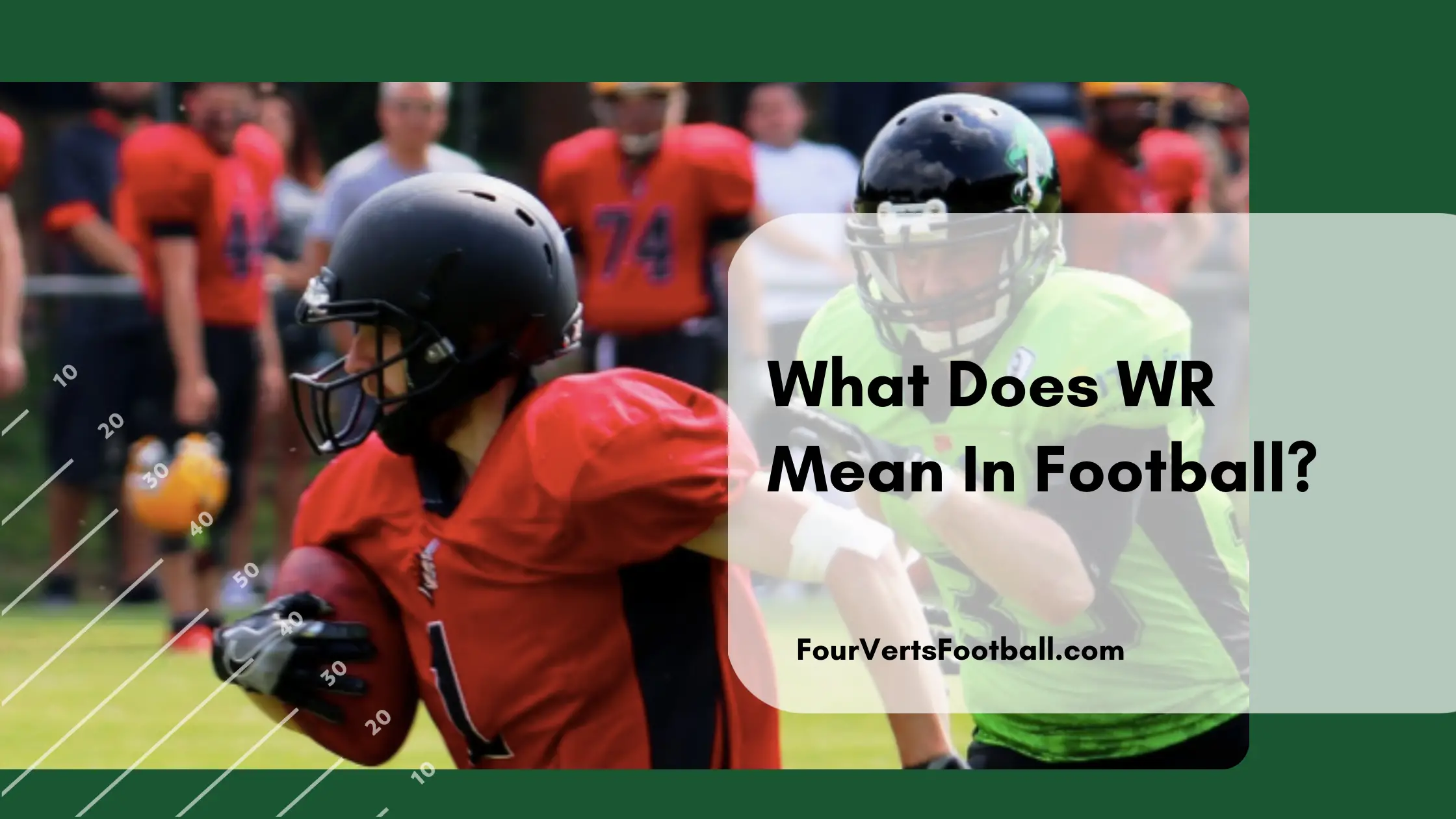The acronym WR in football stands for wide receiver. The wide receiver position in football is responsible for catching forward passes from the quarterback. This position lines up near the sideline, for this reason, they earned the name wide receiver.
In most offensive formations there are going two to three wide receivers on the field. Generally, the term WR refers to the two receivers lined up near the sideline on either side of the field.
That being said WRs can line up in a large number of locations along the field. In between the wide receiver and the formation, there is often another receiver referred to as a slot receiver.
WRs don’t tend to have a specific build as a large number of skill sets and sizes can succeed at this position. One thing wide receivers must be able to do is catch the ball consistently.
The WR catches passes thrown by the QB, other positions that catch passes include RBs and TEs and FBs.
What Does A WR Do In Football?
Now that you know what a WR is in football you may be wondering what exactly these players do on the field.
The main thing WR do in football is catch passes from the quarterback. On offensive players these players must find open space down the field and catch the ball if it comes their way.
The wide receiver position also has some responsibility on rushing plays. These players must block the defensive backs in front of them to create space for the ball carrier.
That being said WRs are mainly valued based on their ability to get open and catch passes.
Route Running as a WR

One of the most crucial aspects of playing the wide receiver position is route running. Many fans of football focus on the catching aspect but getting open is even more important.
Wide receivers need to use their route running to create separation from defenders. This separation allows the quarterback space to throw the ball so that only the wide receiver can get it.
Before each passing play, the wide receiver will be told which route to run. He will then have to utilize fakes, speed, or sharp cuts in order to get away from the defender.
If the receiver is able to get open then the quarterback will try to get him the ball. At this point, the receiver needs to be sure to catch any pass that comes his way.
Run Blocking as a Wide Receiver
Though WRs are primarily used in the passing game they have a role in the rushing offense as well.
Prior to each play starting the wide receiver will be lined up out wide with a CB in front of him.
When the rushing play starts the wide receiver will have to block this cornerback so that he is not able to tackle the ball carrier.
On most running plays these blocks will be inconsequential as the running back will be carrying the ball in the middle of the field.
But if the ball carrier is running towards the sideline the wide receiver needs to make sure he keeps his man out of the running backs way.
Clearing Out With Deep Routes

Another responsibility that wide receivers have is clearing out defensive players with deep routes.
Throughout an entire game, a wide receiver is lucky to even get ten throws his way. This means on a large number of plays this position is not going to be touching the ball.
One of the ways a WR can help the offense without touching the ball is by clearing out safeties and cornerbacks with deep routes.
When a receiver runs deep into the defensive backfield defenders will have to run with him in order to stop a potential deep pass.
On running plays, or plays in which the offense is throwing a short pass, this can be a helpful strategy.
Pulling the defenders further away from the line of scrimmage it makes it easier for the ball carrier to gain yards.
Conclusion
Remember a WR in football is a Wide Receiver which is an offensive position known for catching passes from the quarterback.
There are usually several wide receivers on the field for the offense. These players participate in blocking but are mainly valued for their ability to achieve separation and catch passes.
That is all for learning about the WR position in football, check out some other guides on the OT position or the OG position.

